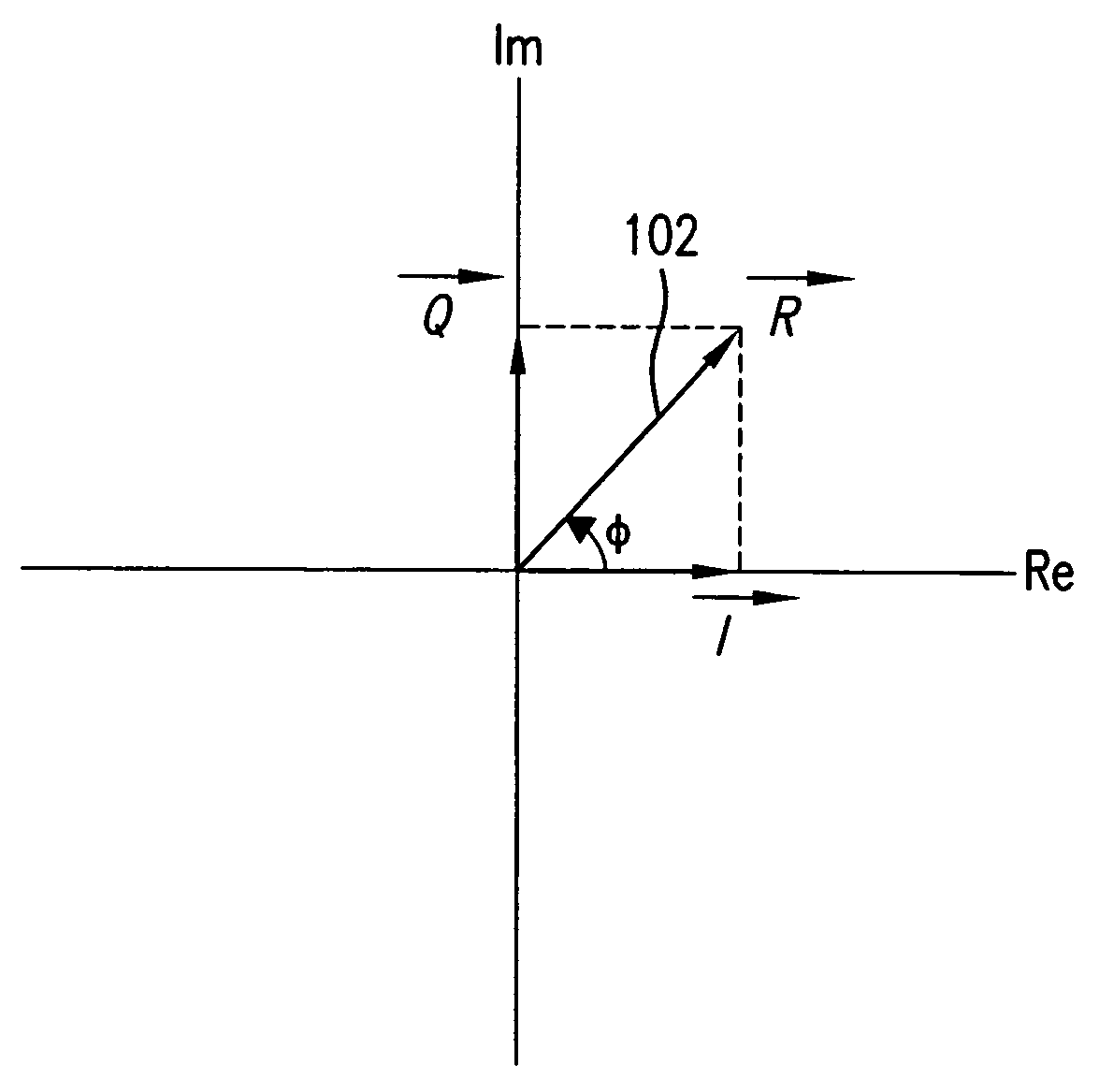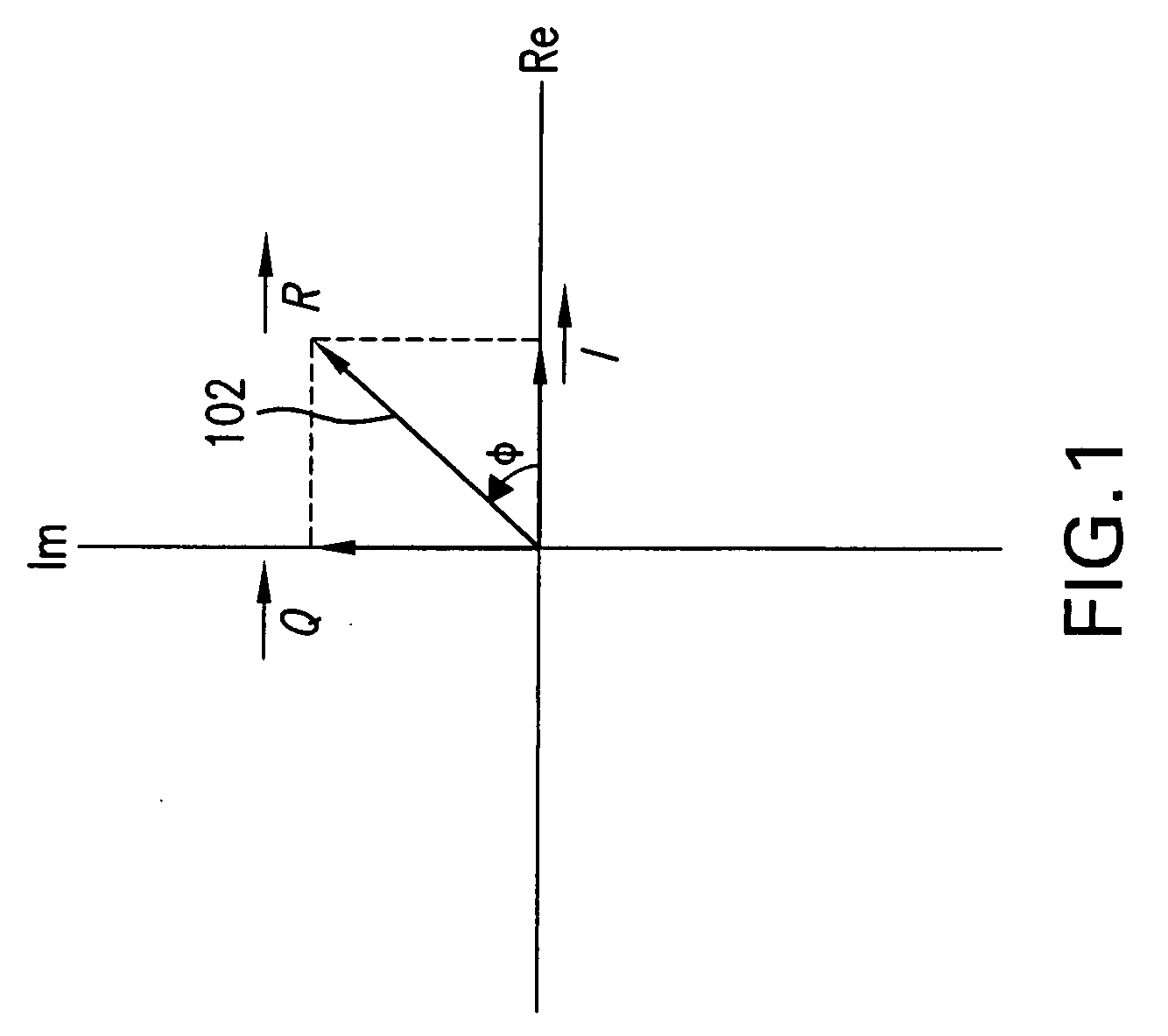Systems and methods of RF power transmission, modulation, and amplification, including embodiments for compensating for waveform distortion
a technology of rf power transmission and modulation, applied in the field of vector combining power amplification, can solve the problems of phase and amplitude errors, gain and phase imbalance, and the magnitude of phase shift transform may not be exactly as theoretically or practically desired, and achieve the effect of cost saving
- Summary
- Abstract
- Description
- Claims
- Application Information
AI Technical Summary
Benefits of technology
Problems solved by technology
Method used
Image
Examples
embodiment 800b
[0257]Embodiment 800B illustrates another single DAC implementation of the vector power amplifier. However, in contrast to the embodiment of FIG. 8A, the sample and hold architecture includes a single set of sample-and-hold (S / H) circuits. As shown in FIG. 8B, S / H 842, 844, 846, and 848 receive analog values from DAC 830, illustrated as signals 832, 834, 836, and 838. Each of S / H circuits 842, 844, 846 and 848 release its received value according to a different clock 840A-D as shown. The time difference between analog samples used for to generate signals 740, 741, 742, 744, 745, and 746 can be compensated for in transfer functions 710 and 712. According to the embodiment of FIG. 8B, one level of S / H circuitry can be eliminated relative to the embodiment of FIG. 8A, thereby reducing the size and the complexity of the amplifier.
[0258]Other aspects of vector power amplifier 800B substantially correspond to those described above with respect to vector power amplifiers 700 and 800A.
[0259...
exemplary embodiment 1000
[0282]FIG. 10 is a block diagram that conceptually illustrates an exemplary embodiment 1000 of the CPCP 2-Branch VPA embodiment. An output signal r(t) of desired power level and frequency characteristics is generated from in-phase and quadrature components according to the CPCP 2-Branch VPA embodiment.
[0283]In the example of FIG. 10, a clock signal 1010 represents a reference signal for generating output signal r(t). Clock signal 1010 is of the same frequency as that of desired output signal r(t).
[0284]Referring to FIG. 10, an Iclk_phase signal 1012 and a Qclk_phase signal 1014 represent amplitude analog values that are multiplied by the in-phase and quadrature components of Clk signal 1010 and are calculated from the baseband I and Q signals.
[0285]Still referring to FIG. 10, clock signal 1010 is multiplied with Iclk_phase signal 1012. In parallel, a 90° degrees shifted version of clock signal 1010 is multiplied with Qclk_phase signal 1014. The two multiplied signals are combined to...
exemplary embodiment 1500
[0351]FIG. 15 is a block diagram that conceptually illustrates an exemplary embodiment 1500 of the Direct Cartesian 2-Branch VPA embodiment. An output signal r(t) of desired power level and frequency characteristics is generated from in-phase and quadrature components according to the Direct Cartesian 2-Branch VPA embodiment.
[0352]In the example of FIG. 15, a clock signal 1510 represents a reference signal for generating output signal r(t). Clock signal 1510 is of the same frequency as that of desired output signal r(t).
[0353]Referring to FIG. 15, exemplary embodiment 1500 includes a first branch 1572 and a second branch 1574. The first branch 1572 includes a vector modulator 1520 and a power amplifier (PA) 1550. Similarly, the second branch 1574 includes a vector modulator 1530 and a power amplifier (PA) 1560.
[0354]Still referring to FIG. 15, clock signal 1510 is input, in parallel, into vector modulators 1520 and 1530. In vector modulator 1520, an in-phase version 1522 of clock si...
PUM
 Login to View More
Login to View More Abstract
Description
Claims
Application Information
 Login to View More
Login to View More - R&D
- Intellectual Property
- Life Sciences
- Materials
- Tech Scout
- Unparalleled Data Quality
- Higher Quality Content
- 60% Fewer Hallucinations
Browse by: Latest US Patents, China's latest patents, Technical Efficacy Thesaurus, Application Domain, Technology Topic, Popular Technical Reports.
© 2025 PatSnap. All rights reserved.Legal|Privacy policy|Modern Slavery Act Transparency Statement|Sitemap|About US| Contact US: help@patsnap.com



